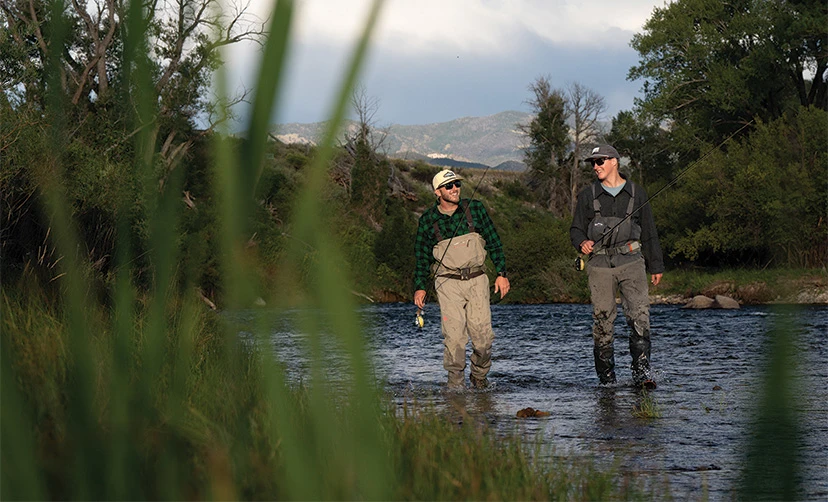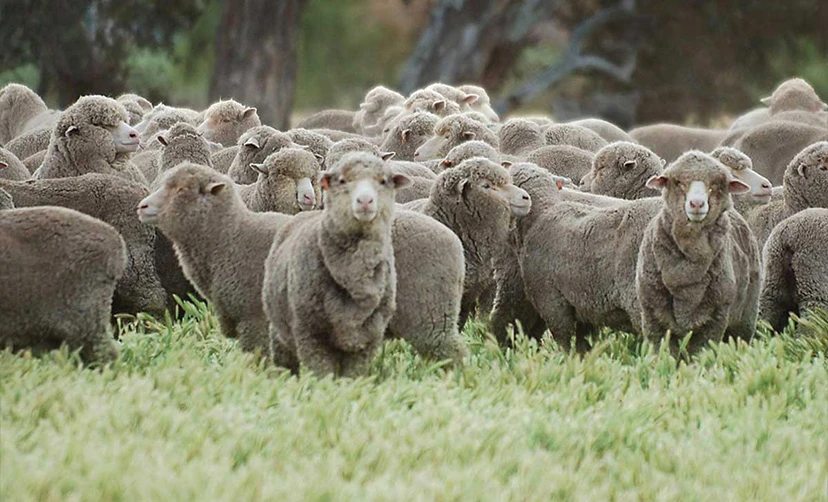Wool excels for outdoor pursuits like fishing, thanks to its sustainability, breathability, thermo-regulating properties, and other benefits.

Today's anglers have many good garment choices made of Merino wool. © Mahting Putelis
Throughout the millennia, wool has been unmatched by other textiles in terms of its naturally occurring properties that have kept us humans (and let’s not forget the sheep) safe and warm in all environments from the arid deserts to the arctic regions of the world.
The History of Wool
The use of wool for clothing dates back thousands of years, making it one of the earliest materials humans utilized for making garments. Archaeological evidence suggests that the domestication of sheep and the practice of spinning wool and weaving woolen fabrics likely began in the Near East and Central Asia around 6000 BC. Early civilizations, such as the Sumerians and the ancient Egyptians, are known to have used wool for their clothing.
Over time, as those civilizations spread and trade routes developed, the knowledge of wool production and clothing making spread across various regions, leading to a rich diversity of woolen textiles in different parts of the world. Advancements in technology during the industrial revolution further transformed the production of woolen textiles, making them more widely available, and affordable.
In recent generations, hunters, fishermen, and explorers have relied on wool clothing for their outdoor pursuits. Your grandfather’s wool hunting gear worked out well for him, but be thankful those days of bulky, stiff, and itchy wool are long gone. Modern-day wool, most specifically the wool from Merino sheep, has been bred and engineered to be lighter, more durable, silky soft, and provide a flexible fit on the body, making it the ideal fabric for today’s “on-the-move” hunter or fisherman.

Merino wool is a sustainable and renewable resource. © Minus33
The Science Behind Wool’s Warmth & Moisture-Management
So what makes wool clothing so warm? The main reason is that wool is a poor conductor of heat. This might sound odd, but it’s actually a good thing. Wool doesn’t absorb the heat that your body works so hard to produce when it’s cold outside. At the same time, wool fabric is a power-insulator. The chemical structure and natural kinks and bends of individual wool fibers trap air to keep your body warm.
When it comes to moisture, wool’s natural water resistance and ability to wick away moisture are among its most impressive qualities. The main thing to know is that wool adsorbs moisture. That’s right, adsorbs not absorbs. Adsorption means that water molecules get trapped in the inner fibers of the fabric. Absorption means water molecules permeate the fabric, making it wet against the skin. With wool, the water is trapped in the inner fiber, so you don’t feel that moisture against your skin—even if your clothes are soaked through.
Moisture Adsorption and Heat Generation
But what happens to that water next? The wool uses it to generate heat! That’s right, when wool’s porous inner fibers absorb water, the fiber breaks down the hydrogen bonds in the water. That chemical reaction actually generates heat. Experiments on this process have shown that one kilogram of merino wool can produce as much heat over eight hours as an electric blanket!
As the inner fibers do their thing generating that heat, the outer layers of wool fibers shed that moisture into the air as vapor. It all happens thanks to the combination of wool’s cellular structure, biophysical qualities, and chemical properties. Overall, the important thing for you to know is this: your wool garments will keep you dry and comfortable by pulling moisture away from your skin and allowing the moisture to evaporate quickly.
Wool has been shown to adsorb 30% of its weight in water. That’s a lot of water! Even after adsorbing that much moisture, wool fabrics still won’t feel clammy or wet to the touch. The heat that wool generates while it dries will insulate your body, keeping you warm even while your layers are wet. This incredible feature of wool can prevent or delay hypothermia in extreme conditions. Search & Rescue groups and first responders rely heavily on wool garments and blankets to maintain body warmth, and re-warm patients in hypothermic states.

Hunters appreciate Merino wool for its warmth when wet, among other properties. © Mahting Putelis
Cotton vs. Wool
Ever heard the saying “Cotton Kills?” That’s because cotton fabrics soak up as much moisture as possible, and the fibers remain wet on the inside and the outside for much longer than wool. The wet cotton clothing will conduct, or pull, warmth away from your body, which can lead to hypothermia, and possibly death.
Fire Resistance
Wool textiles are renowned for their fire resistance and self-extinguishing capabilities. Due to the structure and chemical make-up of wool fibers, they don’t catch fire readily. Simply put, wool fibers require more oxygen than is available in the environment to burn. Wool textiles have a high ignition temperature around 570- to 600°C.
Even when a strong fire contacts wool, the material doesn’t “flame-up”. Instead, it smolders for a short amount of me before self-extinguishing. Unlike synthetic fabrics such as polyester, wool is made of 100% natural proteins, so it doesn’t melt, drip, or stick to the skin when it burns. Similarly, if it does catch fire, wool won’t emit toxic gas and will produce less smoke than other fabrics.

Merino wool base layers are good for campers, their antimicrobial properties reduce odor build-up. © Minus33
Antimicrobial Properties
When you’re in the backcountry for days without access to a shower, you’ll appreciate that wool clothes resist the build-up of odors. As wool wicks sweat from the body, it inhibits the growth of bacteria which causes odor. When you wear wool clothing, you can use them repeatedly over a long period without that bacteria and its odors collecting. You won’t need to wash wool garments as frequently as synthetic clothes, including synthetic- or cotton socks, which can hold and breed bacteria and cause infections like foot fungus.
Over the past few decades, many of today’s clothing brands have turned to synthetics and chemical additives to reduce material costs, and attempt to mimic the natural properties of wool. Granted, some synthetics do a decent job wicking moisture away from the skin. Others can keep you warm. Some can even have chemicals added to block your scent. But despite all this engineering, no man-made fiber can provide all the benefits that wool does naturally. Wool is sustainable, renewable, recyclable, breathable, thermo regulating, anti odor, fire resistant, hypo allergenic, UV protective and much more.
Simply put… Wool Works.
Minus33 Merino Wool Clothing Co. has over 107 years of wool manufacturing experience. Our generational love for hunting & fishing in the White Mountains of New Hampshire, has helped us craft a head-to-toe line of Merino wool under- and outerwear, and NH-USA Made socks for every outdoor activity or extreme environment. #WoolWorks
Minus33 is a proud supporter of Search & Rescue organizations across the country. We donate hundreds of SAR Warming Kits each year to aid in wilderness, water & cold weather rescues.
Discover more entertaining and informative reads in Fish Alaska’s Blog Archive.


